Silage Making Process
- Home
- Cattle Knowledge
- Silage Making Process
Silage Making Process | How to make Silage
A stable supply of green fodder throughout the year is one of the biggest challenges for dairy farmers, especially in regions with distinct seasonal variations. During the monsoon season, green fodder production is often in surplus, yet not all of it is utilized efficiently. On the other hand, in summer, dairy animals may face a shortage of quality green feed, which directly affects milk production and animal health.
One of the most important aspects of animal husbandry is providing the right and nutritious feed for your livestock. If you want to increase your animals’ milk production and store feed for a long time, silage is an excellent solution. Silage is a type of preserved feed that can be stored for an extended period while providing high-quality nutrition to your animals.
What is Silage and Why is it Important?
Silage is chopped green fodder that is preserved immediately after harvesting. Silage is the process of preserving chaffed green fodder under anaerobic conditions (without air) through natural fermentation. Microorganisms convert the sugar present in the green fodder into lactic acid, which prevents spoilage and allows the fodder to be stored for extended periods—up to six months or even a year if handled properly.
This method is particularly effective in regions where fodder shortages during summer affect milk production. By feeding silage to animals during lean days, farmers can maintain both their herd’s health and productivity.
Benefits of silage:
Increases milk production.
Improves animal health.
Reduces dependency on seasonal feed availability.
Can be stored for long-term use without spoilage.
Materials Needed for Making Silage
The main ingredients required for silage are:
Corn (Maize) – Highly nutritious and preferred.
Sorghum (Jowar) – Alternative to corn.
Millet (Bajra) – Another alternative.
Corn is preferred due to its superior nutritional value and higher yield potential.
A variety of green fodder and crop residues can be used to make silage:
Grasses: Koner grass, maize fodder, or other green grasses.
Legumes: Lucerne, clover, or similar legume crops.
Crop Residues: Onion leaves, cereal crop residues, and other leftover plant material.
The Silage Making Process
Harvesting and Preparing Fodder
Chop maize or other green fodder into small pieces.
Use a fodder chopping machine or simple manual cutting tools.
Leave the chopped fodder open for 1 hour to release excess moisture.
Storing Silage
There are several storage options for silage:
Silage bags – convenient for small farmers.
Containers – suitable for larger farms.
Paste or room-type silage – ideal for large-scale dairy operations.
All storage methods require proper pressing of the fodder and covering it with paper or lamination to prevent air exposure.
Why Use Paper or Lamination?
Prevents oxygen from entering the silage.
Encourages the production of lactic acid, which preserves the fodder.
If air enters, the silage may spoil quickly.
When to Use Silage
Begin using silage 45 days after pressing.
Once opened, use gradually and cover the remaining portion properly.
Ideal Stage for Corn Harvest
For making silage, corn should be harvested in the milk stage:
When kernels are not fully mature.
At this stage, corn has the highest nutritional value for silage preparation.
Steps to Prepare Silage
1. Preparing the Corn
Cut and clean the corn properly.
Ensure all material is free from dirt before processing into silage.
2. Pressing
Place the chopped corn into a silage press machine.
Remove all air from the feed to prevent spoilage and maintain quality.
3. Storing
Fill the pressed material into silage bags or storage boxes.
Seal completely to prevent air or moisture from entering.
4. Enhancing Nutrition (Optional)
You can add protein sources or other nutrients to the silage.
This boosts milk production and overall animal health.
How to Use Silage
Silage can be fed to animals in any season.
Especially useful during rainy or cold periods.
Nutritional value peaks in about two months, improving milk output significantly.
Why Make Silage Yourself?
You can build your own silage setup without relying on external suppliers.
Reduces costs and ensures consistent quality.
Allows you to customize feed according to your farm’s specific needs.
Advantages of Using Silage Bags
Silage bags offer several benefits over traditional storage systems:
Economical and Efficient: Bags are more affordable than traditional silos and can be used on a small scale.
Portable and Easy to Store: Available in sizes ranging from 100 kg to 1,000 kg, these bags are easy to transport and store.
Nutritional Preservation: Silage stored in bags retains its nutritive value for a long duration.
Waste Utilization: Crop residues that would otherwise be burned or discarded can be converted into nutritious fodder.
Step-by-Step Guide to Making Silage in Bags
Chop Fodder: Cut green fodder into small pieces about 3 cm in length.
Prepare Additives: For 100 kg of fodder, mix 2 kg jaggery and 1 kg common salt in 3 liters of water. Sprinkle this mixture evenly over the chopped fodder.
Layer Filling: Fill the bag layer by layer, pressing each layer tightly with uniform pressure to remove air pockets.
Moisture Control: Optionally, sprinkle rice bran to absorb excess moisture.
Seal the Bag: Once filled, close the bag tightly to maintain anaerobic conditions.
Storage: The bag can be stored for several months without losing nutritional value.
Feeding Guidelines
Cattle can be fed 10–15 kg of silage daily depending on their size and production needs.
Silage ensures that green fodder is available even during lean periods, supporting consistent milk production.
Tips for Large-Scale Silage Production
For larger dairy farms, adopting modern machinery can make the process more efficient:
Machines to chop the fodder.
Machines to convert chopped fodder into well-packed silage.
Lamination machines to seal silage completely.
This ensures long shelf life and easier storage.
Benefits of Silage
Year-round green fodder availability – useful during dry seasons or off-season periods.
Nutritional value retained – the fodder maintains its original nutrients.
Convenient to use – small farmers can use silage bags or containers.
Long shelf life – can last 1–1.5 years if stored correctly.
Precautions and Limitations
Too dry fodder or excessive additives can spoil silage.
Exposure to air accelerates spoilage.
Once opened, silage should be consumed quickly, as leftovers can go bad.
Conclusion
Silage is a safe, long-lasting green fodder option for farmers and dairy operations. It preserves the nutritional quality of plants and provides reliable feed for livestock during dry periods.
Pro tip: Small farmers should use silage bags or containers, while large farms can invest in machinery and lamination techniques. Always ensure that no air enters the silage and store it properly.
FAQ Section
What is silage and why is it important for dairy animals?
Silage is chopped green fodder that is preserved through natural fermentation under anaerobic conditions. It provides high-quality nutrition, ensures year-round green fodder availability, prevents spoilage, and helps maintain animal health and milk production even during dry or off-season periods.
How long can silage be stored safely?
Properly prepared and stored silage can last 6 months to 1 year without losing its nutritional value. Using silage bags, containers, or lamination techniques prevents air exposure, which helps maintain freshness and prevents spoilage.
Which fodder crops are best for making silage?
The most preferred crops for silage are:
Corn (Maize) – highest nutritional value and yield
Sorghum (Jowar) – good alternative to corn
Millet (Bajra) – another alternative for regions with limited corn availability
Additionally, crop residues like lucerne, clover, cereal leaves, and onion leaves can be mixed to enhance nutrition.
How much silage should I feed per cow daily?
On average, dairy cattle can be fed 10–15 kg of silage per day, depending on the size of the animal and its milk production requirements. Feeding silage consistently helps maintain milk yield even during fodder shortages.
Can I make silage without machinery?
Yes, small-scale farmers can make silage manually using chopping tools and silage bags or containers. Proper chopping, pressing to remove air, and sealing with paper or lamination ensures good fermentation and long-lasting feed, even without machines.
When is the best time to harvest corn for silage?
Corn should be harvested in the milk stage, when kernels are not fully mature. At this stage, corn has the highest nutritional value, making it ideal for silage preparation.
Can silage improve milk production?
Yes! Silage provides nutrient-rich fodder throughout the year, ensuring cows get balanced nutrition even during off-season periods. This directly helps increase milk yield and improves overall animal health.
👉 Apply for a Cattle Loan.
TabelaWala – White Gold Livestock Pvt. Ltd. — Empowering farmers,
App Downloads
Advisor’s Team

Social Media Reach

Happy Customers



Subscribe To Our Newsletter
Welcome to TabelaWala, brand name of White Gold Livestock Private Limited, the ultimate marketplace for dairy farmers looking to buy or sell cows and buffaloes online as well as offline.

+91 830 570 6703
Got Questions? Call us 24/7


